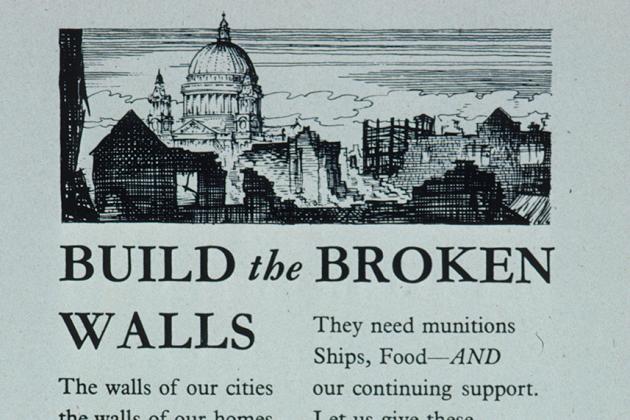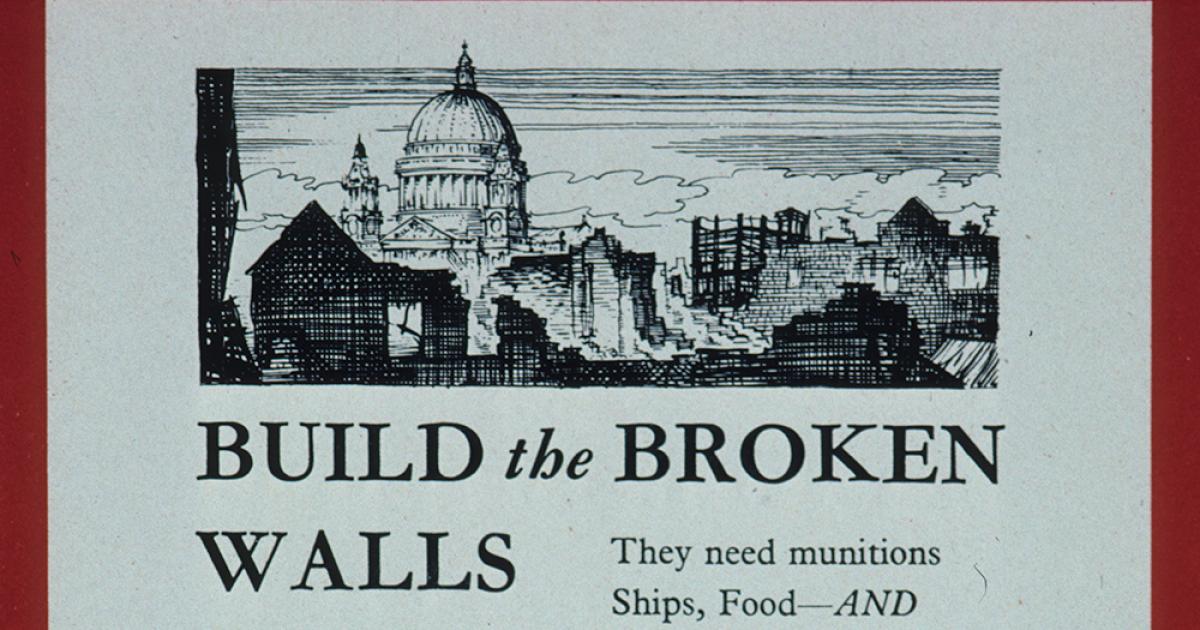- History
- World

Attempts to address complex issues through an analysis of the past invariably run into the reality that history at best provides Delphic answers. Not surprisingly, an examination of the above question provides no simple answer or conclusion. In the end, it is also a matter of where one sits and the context of the time.
For the Roman Empire of the first and second centuries AD, it was relatively easy to separate the two issues. The legions on the frontier, supported by their auxiliaries, provided a clear marker of what was allowed in terms of immigration into the empire. Most historians today believe that the borders of the empire were quite porous, at least in terms of allowing considerable trade back and forth as well as the movement of individuals. But clearly immigration into the empire was carefully controlled, if not prevented.
Thus, for the most part, border security was almost entirely a matter of national security; it was one which worked astonishingly well, with the Romans in a position to dominate the areas on the other side of their frontier with minimal incursions from outside the empire. There were, of course, occasional internal troubles, such as the two Jewish uprisings and the revolt of the tribes in Britain under Nero, but they were only incidents in the larger period of peace. Only on occasion, such as the movement of large Germanic tribes into the empire during the reign of Marcus Aurelius, did internal and external merge into a single necessity of combining national security with internal political stability.
But in the third century AD, and thereafter, matters changed. The question of border security was crucial for both national security and internal political stability, as Germanic and other tribes battered their way into the empire. Despite a good deal of nonsense written by modern historians that the barbarians arrived largely in peaceful fashion, in fact they wrecked everything in the Western Empire and pushed the Eastern Empire to the edge of destruction. Moreover, the penchant of the legions to attempt to overthrow the current emperor exacerbated the internal difficulties and damage occasioned by the barbarian invasions. Thus, the empire failed in its task of providing external and internal security from the third century on.
From the tenth century, as the Europeans emerged from the Dark Ages, some dim conceptions of borders began to emerge. But they had little to do with language, culture, or, until the sixteenth century, religion. In the Middle Ages, wars were little more than conflicts of rapacious pillage and involved internal troubles as much as external threats. The invasions launched by the murderous kings of England against France in the Hundred Years War typified such wars. At least the Hundred Years War did create a sense of nationality among the French and English. But one can hardly talk of borders as anything more than temporary lines drawn between territories ruled by the murderous and ruthless.
The other determinant of frontiers during the late Middle Ages was that of those entities that emerged through marriage connections, such as the weird conglomeration of territories the Hapsburgs hammered together under Charles V. But those territories, no matter how much under the control of the emperor, were a conglomeration of nationalities––the Spanish, the Dutch, the Austrians, the Czechs, and the Italians, among others—hardly represented a state which controlled its borders.
The casual movement of populations throughout the early modern period, was often a result of a desire to populate territories devastated by war and its sister, famine. The constant shifting of territory in the Balkans between the Ottoman Turks and various Christian entities over a number of centuries created an admixture of populations. The need to populate large areas depopulated by war led to the settlement of whoever was available. Thus, the Balkans became a strange mixture of Muslims, Germans, Serbs, Romanians, and Hungarians. The competition among them has lasted right up to the present with the disastrous collapse of Yugoslavia into ethnic warfare, a breakup that still is festering.
The result was a mixture of peoples who spoke different languages and possessed different cultures. The mixed population of the French-speaking and those whose language is Plattdeutsch is an excellent example. To the horror of the Wilhelmine Germans, and particularly the Nazis, a large number of Plattdeutsch speakers regarded themselves as Frenchmen rather than Germans. The result was that throughout the world wars, the two German regimes conscripted the Plattdeutsch, but with reason regarded them with considerable suspicion.
Borders in the modern sense only began to emerge in the eighteenth century with the rise of the European nation states. But border security in terms of anything other than the threat of the movement of large, disciplined armies simply was not a part of the equation. Adding to the lack of concern over frontiers was the fact that the various European states found themselves eager to encourage substantial immigration to their territories to increase their population and particularly attract skilled craftsmen to their industries. What the nationality of those populations was mattered not in the slightest.
There was also the attraction, at least in Scotland and England, of encouraging the outflow of criminals, the poor, and particularly the religiously disaffected, first to the New World on the other side of the Atlantic and then to Australia. For their part, the colonies were delighted to attract immigrants, given the fact that they were desperately short of labor, a factor that contributed to the burgeoning slave trade. But while there were small groups of Europeans who journeyed to the colonies to make their fortune, there were no border controls, only the loneliness of wilderness stretching out across a continent.
Moreover, there was even in the eighteenth century little sense of borders containing homogeneous populations. Catherine the Great simply plucked up large numbers of Germans and plunked them down along the Volga. Frederick the Great had no qualms about seizing the province of Silesia from Austria and incorporating it into his Prussian kingdom at the outset of the War of Austrian Succession. To kick off the next war, he was delighted to crush Saxony and incorporate its army into the Prussian Army under his officers.
The French Revolution served to alter much of the rather loose connection surrounding nationality and borders, although it would take a further eighty years to settle the German and Italian questions. What alleviated the population pressures of improving health and fewer wars in the nineteenth century was the economic explosion caused by the Industrial Revolution. There was also the fact that the United States, Argentina, Australia, and New Zealand provided an outlet for the burgeoning populations of the European states. The new lands, whose indigenous populations disappeared in a welter of disease and military operations, were desperate for immigrants from Europe to fill with the able-bodied the needs of industrial concerns, farms, and other portions of the work force.
There were, not surprisingly, considerable tensions. The Irish, fleeing the great famine, hardly found an enthusiastic welcome, except when they were on the job building railroads, digging canals, or working in the factories and mines of the Industrial Revolution. Tensions could at times explode, as they did in the New York City draft riots of July 1863, when Irish mobs, fearful of conscription, slaughtered blacks throughout the city in outrage that they might be called upon to die to free the slaves. Nevertheless, it is worth noting that while some Irish were posing a murderous threat in New York, more were placing their lives on the line at Gettysburg and Vicksburg.
It is in the twentieth century that we see the emergence of borders that attempted to isolate nationalities into separate states. The results were often bizarre; attempts by the Second Reich to turn Poles and Alsatians and Lorrainers into Germans failed utterly. Only the Americans seemed able to turn a horde of foreigners into Americans, but that was largely the result of the fact that the waves of immigrants were fleeing various forms of persecutions from religion, to their language, to the threat of conscription.
It would take the First World War to bring nationality, borders, and supposed security issues to the forefront. The collapse of the three great Eastern Empires, combined with the Wilsonian belief in national self-determination, created an explosive and in the end disastrous mixture of hatreds, national security concerns, and internal discords in the newly created wreckage left by the collapse of the old order. In spite of its trumpeting of self-determination, those who made the Treaty of Versailles found it impossible to square the circles of national security with the desire of various populations to live with those of the same nationality.
Bereft of their empire, the Austrians attempted to join the new German Republic, only to be told by the French that they were certainly not going to allow a strengthening of Germany which had lost the war after causing so much destruction. The Sudeten Germans claimed that they had no desire to live with the new Czechoslovakia—especially since they had overlorded the Czechs since the Battle of the White Mountain in the seventeenth century. Again, the response of those making the peace in Versailles was “no way.” The Poles and the Czechs quarreled over Teschen; the Romanians, as a member of the victorious coalition, grabbed virtually all of Transylvania, including districts inhabited by Hungarians and Germans. And finally, there was the abomination of Yugoslavia, an attempt to gather the Serbs, Croats, Bosnian Muslims, Montenegrins, and Macedonians into one happy family.
The twenties were to see an uneasy peace settle over Eastern Europe. The safety valve of immigration was no longer there. The Great Depression of the thirties served to exacerbate the divisions among the developed nations. For the first time in its history the United States drew a solid line against further immigration, which would have disastrous consequences when large numbers of Jews attempted to flee the holocaust. The leaders of the Third Reich believed they were not only fighting against external enemies in their effort to achieve the Lebensraum the Aryan peoples required. At the same time, they believed they were fighting against the internal enemies, personified by the Jews but including various national nationalities like the Poles, Czechs, and other Slavs. At times, the Nazi leaders gave priority to the destruction of the internal enemy over the battles they were fighting on their frontiers. By 1944 the Germans had almost as many internal enemies as those external enemies against whom they were fighting.
Stalin’s “workers and peasants paradise” spent almost as much time focused on the internal as on the external enemy as did the Nazis. In the Soviet case the enemy was usually defined as the bourgeoisie and other enemies of the state. The deliberate starvation of millions of Ukrainians and the mass slaughter of the purges in the 1930s set standards of murderous behavior that only Hitler and Mao equaled. The historian Timothy Snyder has described the slaughter that Hitler’s and Stalin’s war—ideological and national—left behind in Eastern Europe in his aptly titled Bloodlands.
And so, we are now in the civilized twenty-first century with Vladimir Putin’s Russia attempting to crush Ukraine because of the danger it represents to the internal stability of his regime. As for the United States, we confront the large question mark of the tension between the external threats (Russia and China) and the internal threat, if it is that, of massive numbers of Spanish-speakers from Central America deluging our southern borders. On the latter internal threat, I am less worried that the border problems we are presently confronting represent an unmanageable threat than does the external threats posed by the hostility of Russia and China, particularly the latter.
















